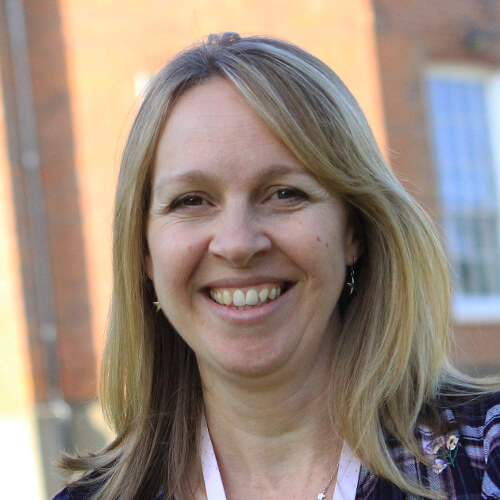7 ways to boost spelling in primary

Greater accuracy will free children to write fluently, at greater length and to include more challenging vocabulary, so try these tips from Kirstie Hewett…

Spelling is a tricky business. It is the aspect of primary English teaching that I have been asked about most often in my work with schools and academies in my local area and beyond.
It is also the aspect that I was least sure of in my own teaching.
Research indicates that many teachers lack confidence in this area, so I was far from alone.
My current role allows me to engage with research on a regular basis and one of my main goals when I took it was to hunt down the answer to the question, ‘How can I teach spelling really well in my classroom?’.
So, here are seven tips to get you started!
1 | Be really enthusiastic about words
Passion for any subject has a huge impact on learners. When a teacher stands before you and communicates with enthusiasm and energy, sharing their fascination for a particular subject or topic, a kind of magic settles in the room.
English words are great! Yes, they’re complex, and rules and patterns often seem more than a little haphazard but in this lies their mystery and wonder.
Spelling is a great skill. Accurate spelling frees children up to write fluently, at greater length and to include more challenging vocabulary in their writing so it’s really well worth the investment.
As teachers, sharing a passion for finding out about words will help our children see the value in what could perhaps be a rather dull and mundane part of the curriculum that we spend time on only because the National Curriculum tells us we have to.
So love it! Be fascinated by it and be fascinated by our brilliant brains, which can find different ways to make spellings automatic.
2 | Teach spelling as a problem-solving process
How teachers view the learning of spelling makes a huge difference in the classroom. To spell successfully, children need a plan of attack.
When they are trying to learn a word, what will they do first? Next? And then?
What if they’ve tried writing the word a few times but can’t quite get it right? Are there tricky parts and easy parts? How could they use visual and aural emphasis to help them with those tricky parts? Would breaking down the word and thinking about its meaning help?
Words can be tricky to learn in different ways, so children need to know different ways of tackling them to develop automatic recall.
3 | Offer lots of opportunities for collaboration
Working together can make a real difference in the spelling classroom. Children can look together at words, sharing their thoughts on how they are structured and comparing their different strategies as they develop automatic, accurate recall.
Articulating what they notice and which strategies they will try first encourages them to share expertise and consolidate their own thinking. Encourage collaborative discussion to contribute to a lively and engaging atmosphere for learning.
4 | Allow time for exploring the structure of words
Look for patterns within words and make connections to other words the children know. This can take a little time to become established as children might not be used to looking closely at words at first.
Allowing time to process the way words are structured (and in conjunction with lots of collaborative talk) gives children the chance to think more deeply, supporting automatic, accurate recall effectively.
Again, the enthusiasm of the teacher will really make a difference here, as children make connections between other words and parts of words, and share their thinking.
5 | Think of the spelling curriculum as three different
I see the National Curriculum requirements as consisting of three different strands. First, there are the rules and patterns for each year group outlined in Appendix 1. These offer a great opportunity for children to study groups of words that have some connection.
Becoming increasingly familiar with these connections (for example that ‘y’ sometimes makes a short ‘i’ sound as in ‘myth’ and ‘gymnasium’) increases the list of plausible options for encoding sounds that children can draw on when learning and spelling words.
Of course, the origin of the word is a key factor in the example given so exploring this will also provide children with additional information to support their understanding and help them draw conclusions about whether a ‘y’ is the best choice for spelling a particular word.
Another strand is the learning of the word lists contained in Appendix 1.
These words are not necessarily connected linguistically to each other at all (although any connections to the rules and patterns referred to above will be worth making), so these words can be looked at as entities in themselves.
Lots of opportunities to study and recall these will help children develop automaticity and accuracy here, and collaborative games and challenges will help keep this fresh and interesting.
The third strand is the need for children to spend time on personal spellings. While they can explore both the above strands and gain valuable information about words, they still need to build their own repertoire of automatically recalled words to help them in their writing.
Children will be applying their strategies to tackle the words they most need to know next. Building clear and simple routines for collaborative learning and individual practice is key to maximising time here, and offers good opportunities for children to apply and experience success if carefully structured.
6 | Use spelling journals
These will help children to build their knowledge of words and about words, and refer back to it. They can record word lists, try out different strategies and engage in activities such as collaborative word hunts and sorts, allowing them to record their thinking for future reference.
This can be really useful in helping children apply their spelling knowledge in their independent writing, as they can have their journals available to refer to.
This resource also allows for an efficient approach to the frequent revisiting of previous learning and practice, again allowing maximum time to be spent on thinking about words and trying out strategies.
7 | Audience and purpose
Finally, the importance of providing authentic reasons to write and real audiences to share their writing with can make a real difference to children’s motivation to get spelling right.
Children are often particularly keen to make sure their spelling is accurate when they know their work will be read by someone other than just their teacher.
This principle underpins the effective teaching of all English in the primary classroom, and can make a significant difference to children’s enjoyment and engagement in all aspects of writing – even spelling!
Kirstie Hewett is a school improvement specialist (primary English) at the University of Chichester and author of UKLA’s Teaching Spelling 6-11: designing effective learning in English and across the curriculum (£10 or £9 for UKLA members). Browse more Year 3 and 4 spelling list resources, Year 5 and 6 spelling list resources and free KS2 spelling worksheets.











